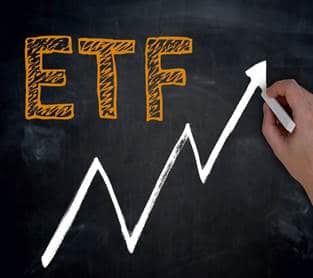Passive ETF Investing: A Guide to Building Wealth
In recent years, passive ETF investing has gained significant popularity among investors seeking a low cost and efficient and solid way to build wealth. Exchange-Traded Funds (ETFs) are investment funds that trade on stock exchanges, similar to individual stocks. Unlike actively managed funds, which aim to outperform the market through active stock picking and market timing, passive ETFs aim to replicate the performance of a specific index or asset class.
In this blog post, we will dive into the world of passive ETF investing, exploring its benefits, strategies, and considerations for investors looking to incorporate this approach into their portfolio.
Benefits of Passive ETF Investing
1. Diversification: One of the key advantages of passive ETF investing is the ability to achieve instant diversification. By investing in an ETF that tracks a broad-based index, such as the S&P 500 or the MSCI World Index, investors gain exposure to a wide range of companies across various sectors and geographies. This diversification helps reduce the risk associated with individual stock selection and can lead to more stable long-term returns.
2. Lower Costs: Passive ETFs typically have lower expense ratios compared to actively managed funds. Since these funds aim to replicate an index rather than actively select stocks, they require less research and portfolio management. As a result, investors can benefit from lower fees, allowing them to keep more of their investment returns over time.
3. Transparency: Passive ETFs provide transparency in terms of their holdings and underlying index composition. Investors can easily access information about the fund’s assets, sector allocations, and individual holdings. This transparency allows investors to make informed decisions based on their investment objectives and risk tolerance.
Strategies for Passive ETF Investing
1. Broad Market Index Investing: This strategy involves investing in ETFs that track broad market indices, such as the S&P 500 or the FTSE All-World Index. By investing in these funds, investors gain exposure to a wide range of companies across different sectors and geographies. This strategy is suitable for long-term investors who believe in the overall growth of the global economy.
2. Sector or Theme Investing: Another strategy is to invest in ETFs that focus on specific sectors or themes. For example, an investor may choose to invest in an ETF that tracks the technology sector or renewable energy companies. This strategy allows investors to target specific areas of the market they believe will outperform over time.
3. Bond Market Investing: Passive ETFs also offer opportunities for fixed-income investors. Bond ETFs track various bond indices, providing exposure to government bonds, corporate bonds, or municipal bonds. This strategy can be used to diversify a portfolio and generate income through interest payments.
Considerations for Passive ETF Investing
1. Risk and Volatility: While passive ETFs offer diversification benefits, they are still subject to market risk and volatility. Investors should be aware that their investment value can fluctuate based on market conditions. It is important to have a long-term investment horizon and be prepared for short-term fluctuations.
2. Tracking Error: Passive ETFs aim to replicate the performance of an index, but they may not perfectly match the index’s returns due to factors such as fees and tracking error. Tracking error refers to the difference between the ETF’s performance and the index it tracks. Investors should consider the historical tracking error of an ETF before investing.
3. Liquidity: ETFs trade on stock exchanges like individual stocks, which means their liquidity can vary throughout the trading day. While most popular ETFs have sufficient liquidity, investors should be mindful of trading volumes and bid-ask spreads when buying or selling shares.
Passive ETF investing offers a compelling approach for investors looking to build wealth over the long term. With benefits such as diversification, lower costs, and transparency, passive ETFs have become a popular choice among both individual and institutional investors. By understanding the different strategies and considerations associated with passive ETF investing, investors can make informed decisions that align with their investment goals.
At Pyjamastraders we are huge fans of Passive ETF Investing, it lays a good foundation on you journey to wealth
Simon Frandsen / Pyjamastraders

